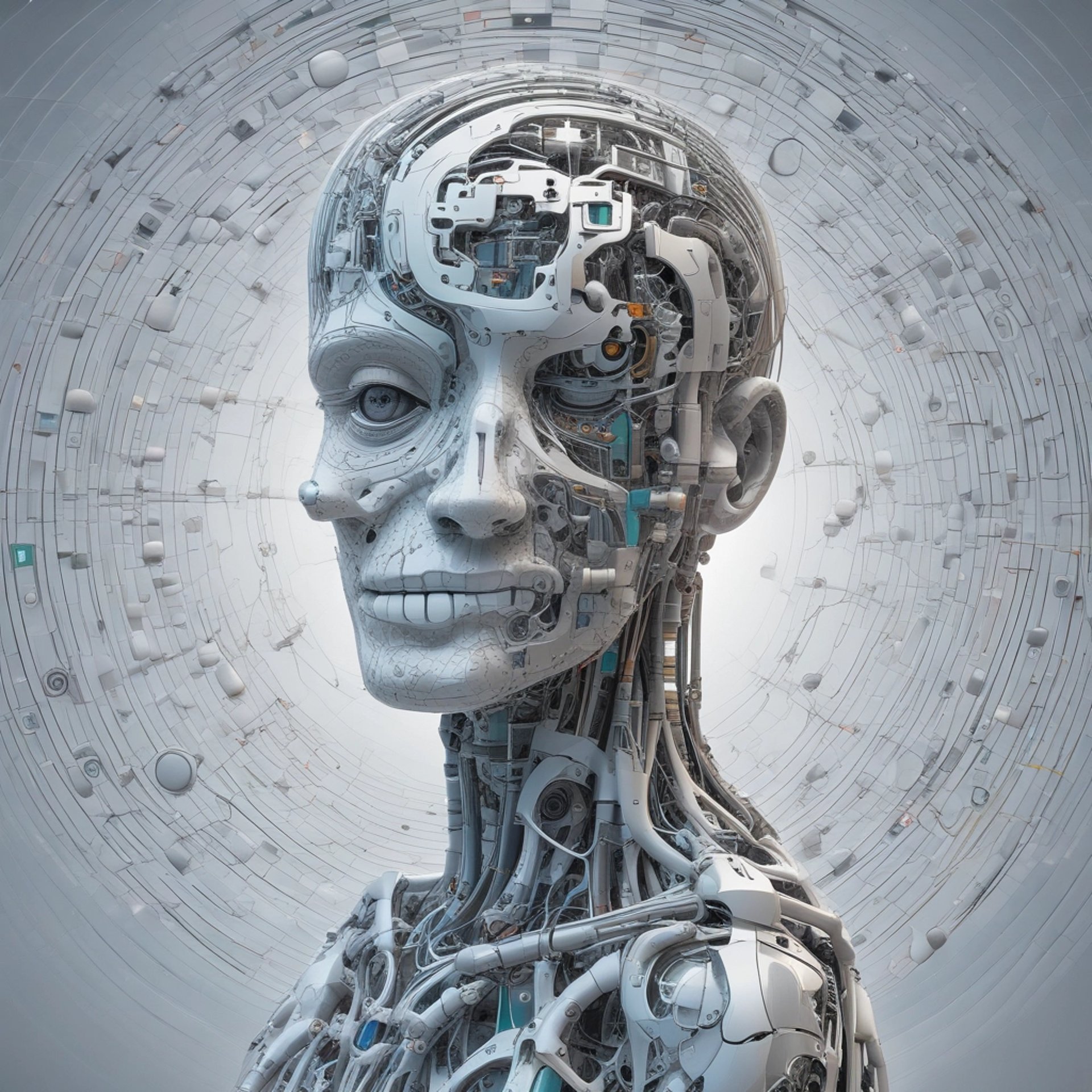Beginner's Guide to Exploring Artificial Intelligence: Simple Projects and Daily Applications
9/21/20255 min read

Understanding Artificial Intelligence: A Beginner's Introduction
Artificial intelligence (AI) refers to the simulation of human intelligence in machines that are designed to think and act like humans. This technology encompasses various branches, each contributing to the broader field of AI. The primary domains include machine learning, natural language processing, and computer vision. Together, these branches enable computers to process data, understand language, and interpret visual information, creating opportunities for innovative applications across diverse industries.
Machine learning, a significant subset of AI, involves algorithms that allow computers to learn from and make predictions based on data. This can be seen in applications like recommendation systems, which suggest products or content to users based on their preferences and previous behaviors. The ability of machines to improve their performance over time is a crucial factor in the growing effectiveness of AI applications, making this a compelling area for beginners to explore.
Another important aspect is natural language processing (NLP), which focuses on the interaction between computers and humans through natural language. This technology powers virtual assistants, chatbots, and language translation services, facilitating seamless communication between users and machines. By understanding and processing human language, AI can assist in an extensive range of tasks, thereby enhancing user experiences and improving efficiency in various sectors.
Computer vision is yet another vital branch of AI that enables machines to interpret and make decisions based on visual data. Applications range from facial recognition systems to autonomous vehicles, showcasing the transformative potential of this technology. As industries increasingly adopt AI-driven solutions, it becomes essential for beginners to recognize not only the functionality of these tools but also their impact on job roles and everyday functions.
In conclusion, gaining a foundational understanding of AI is crucial for those looking to delve into this rapidly evolving field. By breaking down the complex concepts of machine learning, natural language processing, and computer vision, beginners can appreciate the significance of AI technology in modern life and consider various paths for exploration.
Simple AI Projects for Beginners to Get Started
Embarking on a journey into the diverse world of artificial intelligence can be both exciting and daunting for beginners. However, engaging in simple AI projects can significantly enhance understanding and practical experience. Below, we present a selection of beginner-friendly AI projects designed to foster skill development and encourage creativity.
One of the most accessible projects is creating a basic chatbot. Chatbots can simulate conversations with users, making them a great introduction to natural language processing. The primary goal is to build a functional chatbot using Python, employing libraries like NLTK or ChatterBot. To achieve this, beginners will need Python installed alongside basic knowledge of programming, followed by steps such as defining conversation patterns and training the bot with sample dialogues.
Another project involves developing an image recognition application. This task gives beginners insight into how neural networks work. Utilizing frameworks such as TensorFlow or Keras, participants can create a model that classifies images from datasets like CIFAR-10 or MNIST. Participants should be familiar with Python programming and image processing concepts. The goal is to train the model on labeled data to correctly identify and categorize new images.
Sentiment analysis tools present another engaging project. This application involves analyzing text data, usually from social media or reviews, to determine the sentiment behind it (positive, negative, or neutral). Beginners can use Python and libraries like TextBlob or VADER for sentiment computation. The essential steps include collecting a text dataset, preprocessing the data, and applying the sentiment analysis tools to derive insights from the textual data.
These projects lay the groundwork for exploration in artificial intelligence, allowing beginners to engage with practical applications while deepening their understanding of AI concepts. As they complete these activities, they will start building essential skills that are applicable across various fields of AI development.
Everyday Applications of AI: Enhancing Daily Productivity
Artificial intelligence is making significant strides in enhancing productivity across various aspects of daily life. One of the most prominent applications is the use of virtual assistants, such as Amazon's Alexa, Google Assistant, and Apple's Siri. These AI-powered tools facilitate a wide array of tasks ranging from setting reminders, managing schedules, to providing relevant information through simple voice commands. By utilizing virtual assistants, individuals can save time on repetitive tasks, thus allowing them to concentrate on more complex and creative endeavors.
Another vital application of AI in everyday life is the AI-driven personal organizer. These tools leverage machine learning algorithms to analyze users' habits, preferences, and schedules. By doing so, they provide personalized assistance in task management and planning. For instance, applications like Todoist and Notion not only help in organizing tasks but also offer intelligent suggestions for prioritizing them. This leads to a more streamlined workflow and increased efficiency in daily routines.
Recommendation systems, which are commonly used by streaming services and e-commerce platforms, are also noteworthy in the realm of productivity. AI algorithms analyze user behavior and preferences to suggest relevant content or products, saving individuals the effort of manually searching through vast resources. This effectiveness can result in considerable time savings when it comes to content consumption or shopping, allowing users to focus more on their engagements.
Lastly, language translation applications powered by AI, such as Google Translate, enhance communication, especially in diverse work environments. These tools enable seamless interaction among individuals who speak different languages, thereby facilitating collaboration and understanding. Integrating AI applications into daily routines can significantly automate mundane tasks and enhance efficiency, freeing up time for individuals to focus on their creative processes and innovative projects.
Creative Ways to Experiment with AI Tools Safely
As artificial intelligence continues to evolve, beginners are increasingly drawn to its creative possibilities. By accessing various AI platforms, individuals can embark on projects such as generating stunning artwork, composing unique music, or crafting compelling stories. Tools such as DeepArt and DALL-E permit users to create visually striking images, while platforms like OpenAI’s MuseNet or Jukedeck enable musical experimentation. These applications empower users to explore their artistic expression, but it is vital to approach these technologies with a sense of responsibility.
Before diving into creative endeavors with AI, it is essential to remain aware of the ethical considerations that accompany the use of these tools. Data privacy should be a foremost concern, particularly when working with sensitive or personal information. Utilizing platforms that prioritize user privacy will help mitigate risks associated with data misuse. Besides privacy, the question of originality and authorship arises when AI-generated content is shared. It is crucial for users to recognize their role as creators and ensure proper attribution when using AI for projects. This awareness promotes responsible AI usage and fosters a respectful relationship with the technology.
Furthermore, while AI can provide unique insights and generate creative content, it is important for beginners to maintain a critical perspective. Understanding the limitations of AI in terms of creativity and emotional depth can help users successfully blend human intuition with machine-generated ideas. Using AI as a collaborative partner, rather than a sole creator, can lead to innovative results. Experimenting with AI tools should be a journey of exploration that encourages creativity while emphasizing the importance of ethical principles. Engaging with AI in a safe context can inspire individuals to push their creative boundaries effectively while being mindful of broader implications surrounding the technology.
